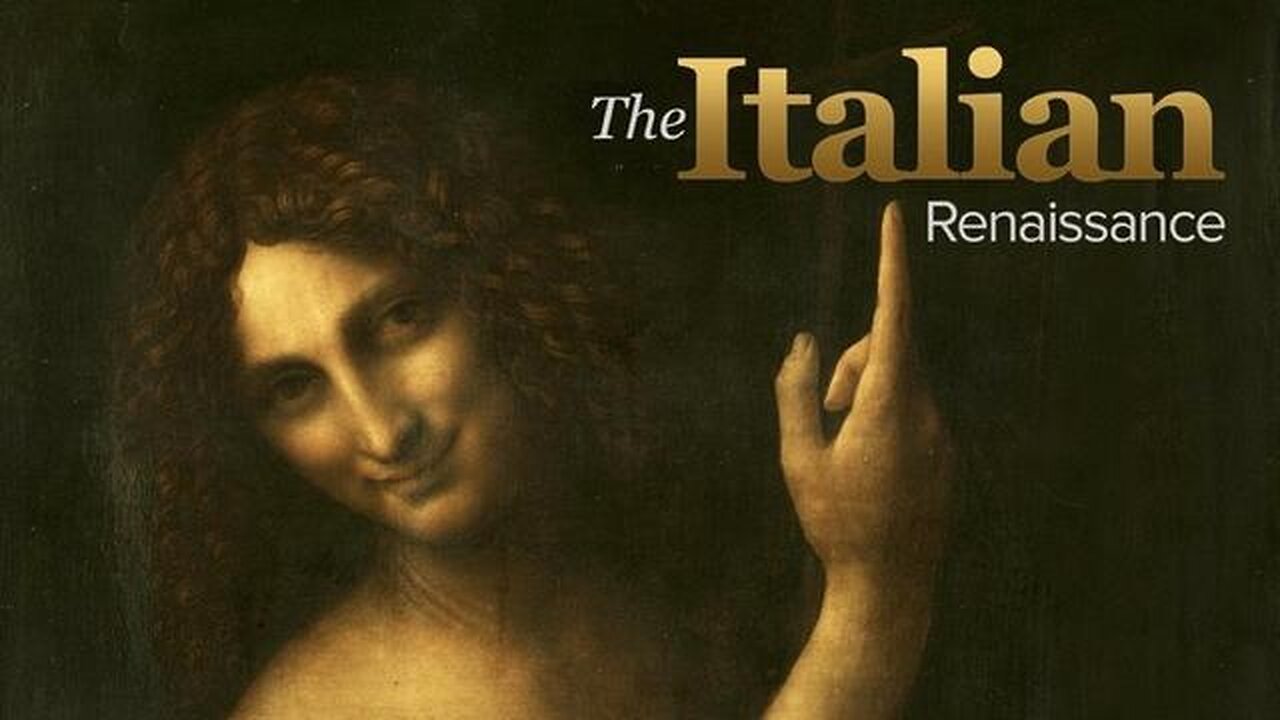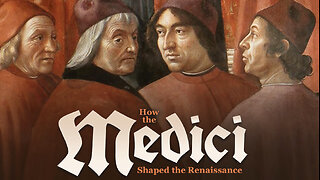Premium Only Content

The Italian Renaissance | The Study of the Italian Renaissance (Lecture 1)
36 lectures, 30 minutes/lecture
Taught by Kenneth Bartlett, Ph.D.
Professor of History and Renaissance Studies University of Toronto
Lecture 2: https://rumble.com/v4wj8z0-the-italian-renaissance-the-renaissance-changing-interpretations-lecture-2.html
This course on the Italian Renaissance will attempt to answer the question: Why was there such an explosion of creative culture, human ingenuity, economic development, and social experimentation in Italy beginning in the 14th century? It will also address the question of why the Renaissance ended in the middle years of the 16th century. In order to investigate the phenomenon of the Renaissance in Italy, it is necessary to look at every facet of human endeavor. Thus, this series will not be a discussion of major political, military, or economic events, although these will appear, as appropriate. Rather, the course will follow the model of writing Renaissance history designed by its first great practitioner, Jacob Burckhardt, whose 1860 book-length “essay,” The Civilization of the Renaissance in Italy, initiated the model of cultural history, that is, looking at a period in the past from several perspectives simultaneously to produce a sophisticated, multidimensional image. Just as each tessera in a mosaic contributes to the whole, so each element in social, political, economic, cultural, intellectual, and religious history contributes to the composite picture of life in Italy in the years between the birth of Petrarch in 1304 and the terrible events of the 1520s–1540s that extinguished the flame that the poet first lit.
Lecture 1: There are many ways of approaching the study of the Italian Renaissance. My method in this course is to provide a wide perspective based on a fusion of many disciplines. This form of interdisciplinary analysis is generally described as cultural history, following the method employed by Jacob Burckhardt in his pioneering The Civilization of the Renaissance in Italy (1860). This approach is similar to the creation of a mosaic, in which each separate tessera contributes to the wider image, providing for a complex and subtle understanding of a historical epoch. I have also imposed a rough chronological structure to ensure that the information progresses logically. However, given that the engagement with Renaissance values took place at different times in different places in Italy, each major center requires its own context. You will find, then, that lectures on specific city-states are interspersed with those on general currents in philosophy, education, and other cultural elements that can be seen to apply broadly to the peninsula as a whole. The aim of this series is to provide you with a multifaceted and complex image of Renaissance Italy that explains why that period remains fundamental to modern Western culture.
We begin our study of the Renaissance with Petrarch, although it is important to put his career and work into context. Consequently, we will review the general condition of Italy during the late Middle Ages and discuss why Dante (who died when Petrarch was 17) can be seen as essentially a medieval thinker. It is more difficult to identify a clear moment at which the Renaissance ends, even in Italy. I will argue that the Renaissance was, in essence, a set of attitudes and beliefs, founded on the application of ancient literature to the needs of Italians from the late 14th to the 16th centuries. For this reason, I suggest that it was the loss of confidence in those beliefs that eroded the Italians’ dedication to such principles as the dignity of man and the ability of the individual and community to determine their own history. After the French invasions and the peninsular wars, after the sack of Rome and the collapse of the Florentine Republic, and especially after the suppression of freedom of ideas occasioned by the Roman Inquisition and the Index of Prohibited Boo
Primary Source Texts:
Kenneth R. Bartlett, “Introduction,” pp. 1–7, in The Civilization of the Italian Renaissance.
Secondary Sources:
Jacob Burckhardt, The Civilization of the Renaissance in Italy, Vol. I: The State as a Work of Art, The Development of the Individual, The Revival of Antiquity.
———, The Civilization of the Renaissance in Italy, Vol. II: The Discovery of the World and of Man, Society and Festivals, Morality and Religion.
Supplementary Reading:
Margaret Aston, ed., The Panorama of the Renaissance: The Renaissance in the Perspective of History.
C. F. Black, et al., Cultural Atlas of the Renaissance.
-
 30:08
30:08
The Great Courses
13 days agoHow the Medici Shaped the Renaissance | The Godfather: Cosimo de' Medici (Lecture 3)
198 -
 1:15:00
1:15:00
Awaken With JP
20 hours agoMerry Christmas NOT Happy Holidays! Special - LIES Ep 71
272K218 -
 1:42:21
1:42:21
The Quartering
21 hours agoTrump To INVADE Mexico, Take Back Panama Canal Too! NYC Human Torch & Matt Gaetz Report Drops!
199K116 -
 2:23:15
2:23:15
Nerdrotic
21 hours ago $15.98 earnedA Very Merry Christmas | FNT Square Up - Nerdrotic Nooner 453
147K13 -
 1:14:05
1:14:05
Tucker Carlson
21 hours ago“I’ll Win With or Without You,” Teamsters Union President Reveals Kamala Harris’s Famous Last Words
253K392 -
 1:58:31
1:58:31
The Dilley Show
21 hours ago $38.23 earnedTrump Conquering Western Hemisphere? w/Author Brenden Dilley 12/23/2024
184K50 -
 1:09:59
1:09:59
Geeks + Gamers
22 hours agoSonic 3 DESTROYS Mufasa And Disney, Naughty Dog Actress SLAMS Gamers Over Intergalactic
125K21 -
 51:59
51:59
The Dan Bongino Show
23 hours agoDemocrat Donor Admits The Scary Truth (Ep. 2393) - 12/23/2024
973K3.25K -
 2:32:15
2:32:15
Matt Kohrs
1 day agoRumble CEO Chris Pavlovski Talks $775M Tether Partnership || The MK Show
151K36 -
 28:23
28:23
Dave Portnoy
1 day agoDavey Day Trader Presented by Kraken - December 23, 2024
181K47